Which is very important for all the students of class six to understand matriculation and we have explained the geometry of chapter 4 of NCERT class six mathematics in a very good way for the students. Solved in this way, I have tried my best to explain the geometry to the students in visual form, we have started all the NCERT questions in the solution of NCERT through diagram
NCERT Solutions for Class 6 Maths Chapter 4 Basic Geometrical Ideas Ex 4.1
Question 1.
Use the figure to name:
(a) Five points
(b) A line
(c) Four rays
(d) Five line segments.
Solution :
(a) O, B, C. D, E
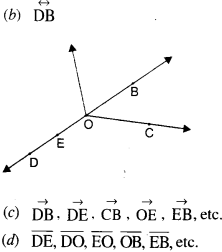

Question 2.
Name the line given in all possible (twelve) ways, choosing only two letters at a time from the four given.
Solution :
![]()
![]()


Question 3.
Use the figure to name:
(a) The line containing point E.
(b) The line passing through A.
(c) The line on which O lies
(d) Two pairs of intersecting lines.
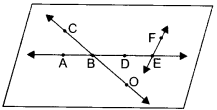

Solution :
(a) AE←→, etc.
(b) AE←→, etc.
(c) CO←→orOC←→
(d) CO,←→−AE←→;AE←→,EF←→.
Question 4.
How many lines can pass through
(a) one given point?
(b) two given points?
Solution :
(a) Countless lines can pass through one given point.
(b) One and only one line can pass through two given points.
Question 5.
Draw a rough figure and label suitably in each of the following cases :
(a) Point P lies on AB¯
(b) XY←→ and PQ←→ intersect at M.
(c) Line contains E and F but not D.
(d) Op¯ and OQ¯ meet at O.
Solution :
(a)
![]()
![]()
(b)
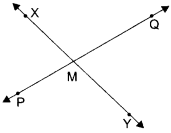

(c)
![]()
![]()
(d)
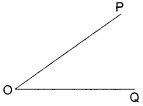

Question 6.
Consider the following figure of line MN¯ Say whether following statements are true or false in context of the given figure.
(a) Q, M, O, N, P are points on the line MN¯
(b) M, O, N are points on a line segment MN¯.
(c) M and N are end points of line segment MN¯.
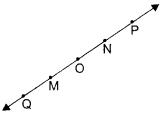

(d) O and N are end points of line segment OP¯.
(e) M is one of the end points of line segment QO¯.
(f) M is point on ray OP−→−.
(g) Ray OP−→− is different from ray QP−→−.
(h) Ray OP−→− is same as ray OM−→−.
(i) Ray OM−→− is not opposite to ray OP−→−.
(j) O is not an initial point of OP−→−.
(k) N is the initial point of NP−→− and NM−→−.
Solution :
(a) True
(b) True
(c) True
(d) False
(e) False
(f) False
(g) True
(h) False
(i) False
(j) False
(k) True.
